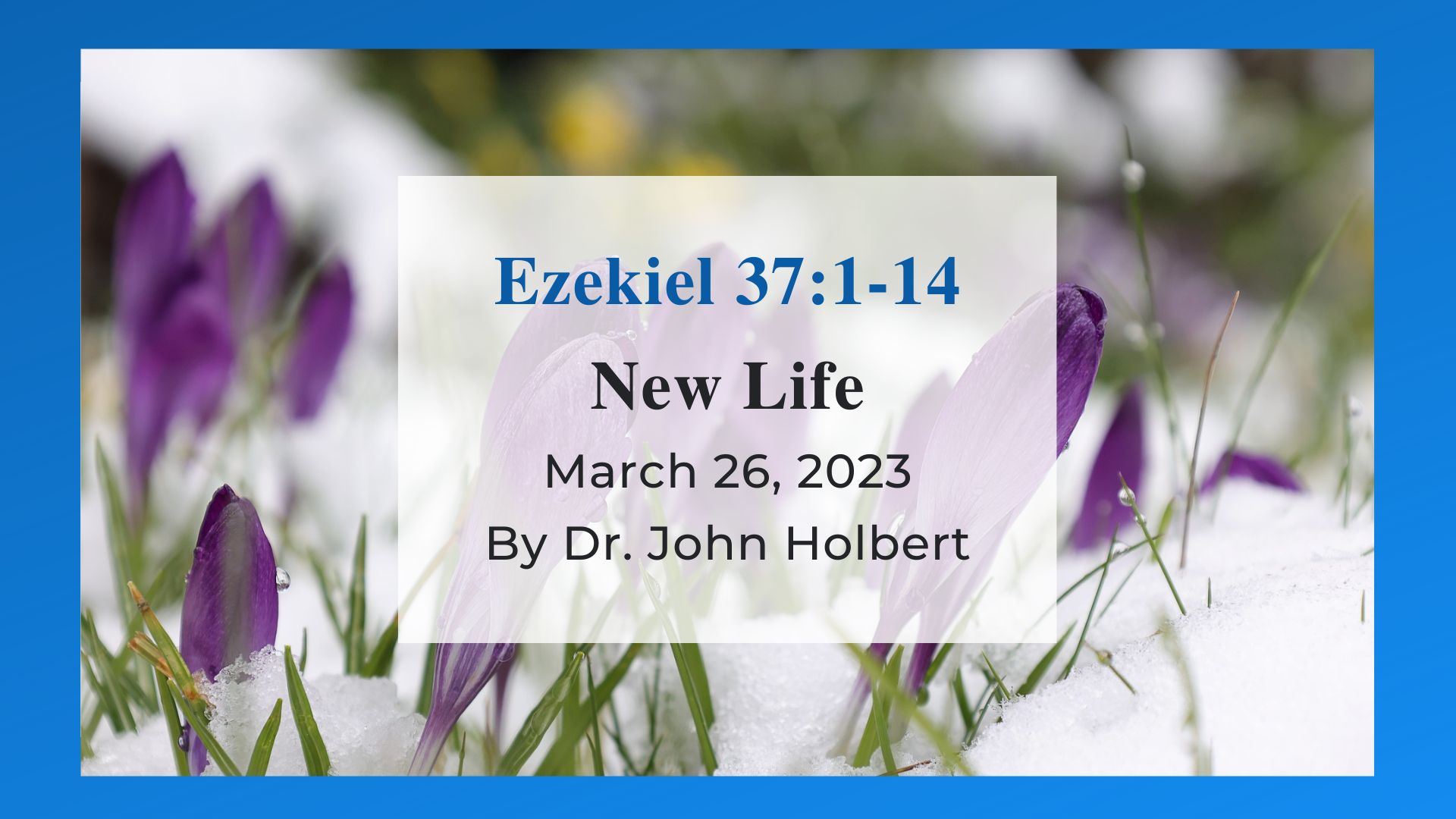New Life - Reflections on Ezekiel 37:1-14
by Dr. John Holbert on Monday, March 20, 2023

New Life
Ezekiel 37:1-14
The Peripatetic Hebrew Bible Preacher
It is not unusual for the lectionary to pair the famous Ezekiel 37 tale of the valley of dry bones with the even more famous story in John’s Gospel of the raising of Lazurus from the dead by Jesus. Surely, for John, this detailed story prefigures the resurrection of Jesus; new life is possible, claims John, and the miraculous life, death, and resurrection of Jesus make that plain. Though the Ezekiel story sounds for all the world like a story of resurrection and has often been heard to be one, any careful reading of it should make it abundantly clear that the prophet is not speaking of some physical resurrection, but rather is concerned with the hope of a future for a defeated and decimated Israel. What we know of the biography of the strange prophet makes such a reading necessary.
The very long 48-chapter book of Ezekiel was composed against the backdrop of the end of days of Judah and Jerusalem. Ezekiel almost certainly was a witness to the so-called first deportation of certain elements of the population of Jerusalem to the capital city of the conquerors, Babylon. Indeed, Ezekiel himself may have been one of those deportees, though we cannot be certain. Even if the prophet remained in the city of David while the Babylonian army had its way with the Judeans, he surely saw the easy defeat of Jerusalem and the installation of the Babylonian puppet king, Zedekiah, on the throne. Nebuchadnezzar left Jerusalem in 597 BCE satisfied that the city was now in effect under the thumb of his vast empire. He could not have predicted then that a mere 10 years later, his puppet, under the instigation of some of his foolish courtiers, would attempt a revolt against that empire, and that Nebuchadnezzar would need to return to Jerusalem in a towering rage to this time ravage the city, sack the temple and palace, and drag many city leaders off to permanent exile. If Ezekiel was ensconced in Babylon during that time and did not see first-hand the end of his city and country, he surely would have learned of the disaster all too soon.
Those dreadful events are what inform the tale of the valley of dry bones: the smoking ruins of Jerusalem, the city laid waste, the temple razed, the palace of the Davidic kings destroyed, all semblance of regular life dissipated. Was Israel, the chosen place of YHWH, its people heirs of Abraham, Isaac, and Jacob, destined to be a blessing to all the nations (Gen.12), now fated to disappear into the mists of history, one more tiny nation swallowed up by the greedy maw of a hungry empire? Had the world heard the last of Israel?
The prophet shouts a resounding No! By all lights, Israel and the city of Jerusalem are nothing more after the onslaught of the Babylonian than a valley filled with dry bones. Note that the bones are dry, not recent casualties of ignominious defeat, but rather bones that have lain untended and forgotten for such a long time that any flesh and tendons and sinews have long been dissolved by time’s inevitability. Ezekiel’s vision suggests that Jerusalem and Judah, and hence all that is left of Israel, are nothing more than dry bones, desiccated skeletons without a shred of life, and thus void of any shreds of hope for renewal.
Yet the prophet proclaims that in the face of that fully parched and arid landscape, hope still springs up. In response to the question of YHWH God, “Mortal, can these bones live,” the prophet first says, “YHWH God, you know,” which may be a way politely of saying, “Not likely!” But God has not yet given up on Israel, nor on us, because the prophet is asked to animate these bones with his prophecy, with his prophetic voice. And so, Ezekiel, even as he looks at the blasted city and country, raises his voice again, speaking to the bones, and witnesses a spooky noise of rattling, and sees the bones slide together, held fast by sinews and tendons, covered by new skin, as the bones “hear the word of the Lord,” as the old song says. At the end of the sermon, “they lived, and stood on their feet, a vast multitude” (Ez.37:10).
This is not physical resurrection talk, as Ez.37:11-14 makes certain. “Mortal, says YHWH, “These bones are the whole house of Israel,” metaphorically trapped in the graves of death. But God says, “I am going to open your graves, and bring you up from your graves, O my people, and I will bring you back to the land of Israel” (Ez.37:12-13). It may well be that the pairing of Ezekiel 37 and John 11 is not so far-fetched. In the power of God there is no death so dead that God cannot find life in it. Or, in the words of Buechner’s Godric, “All the death there is, set next to life, would scarcely fill a cup.” I suggest that Ezekiel’s metaphorical language is matched by Christianity’s metaphorical language about the resurrection of Jesus. I do not believe that one must suspend the laws of physics and believe that a dead man once physically rose up from the grave; such a belief does not make one a Christian, nor does the denial of that belief exclude one from claiming Christianity. What Christianity says is that God is Lord of life, and no human-dug metaphorical grave can withstand the power of that God. And it is that life-affirming word that we preachers are called to speak, in the face of a world strewn with dry bones.
